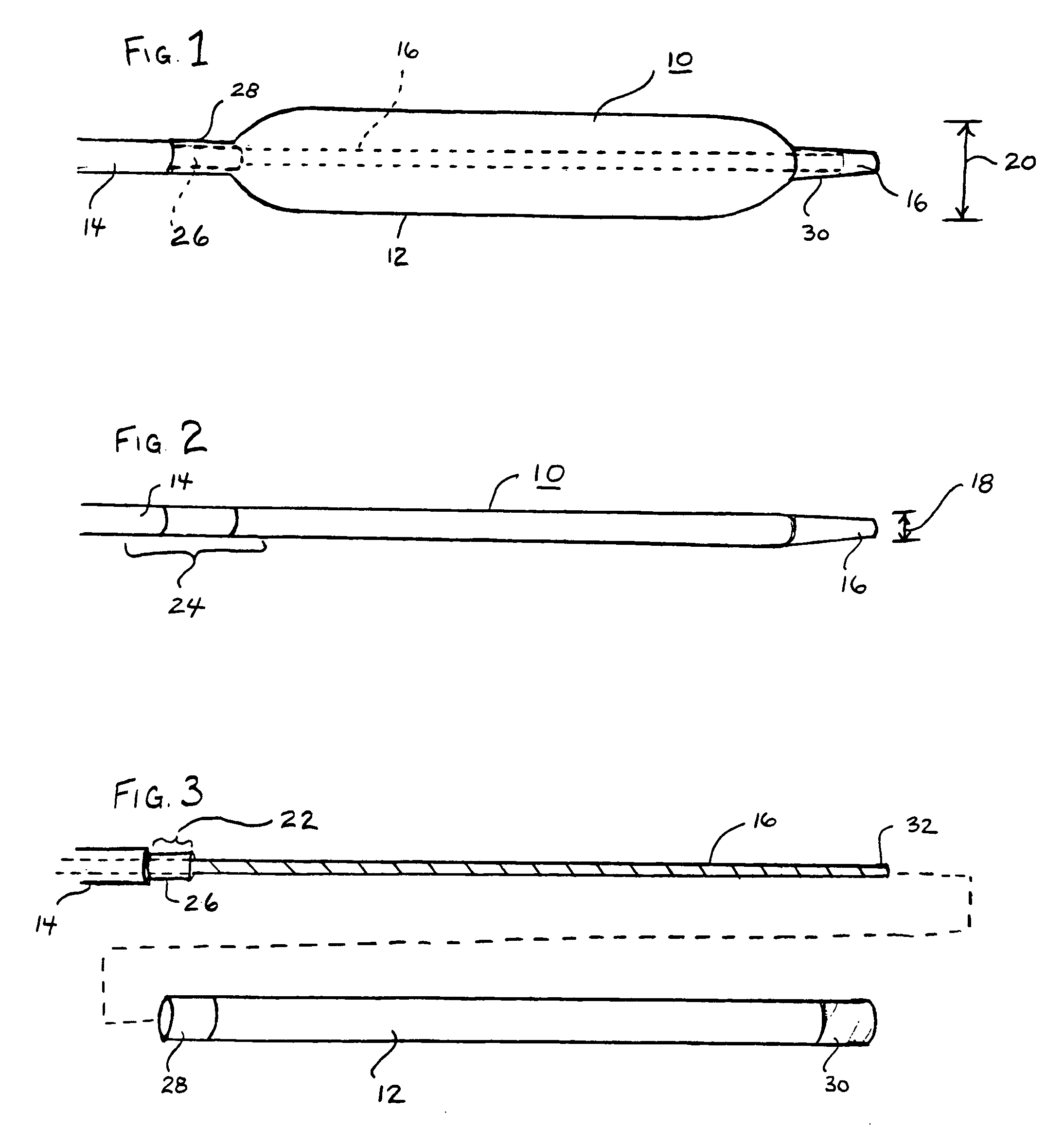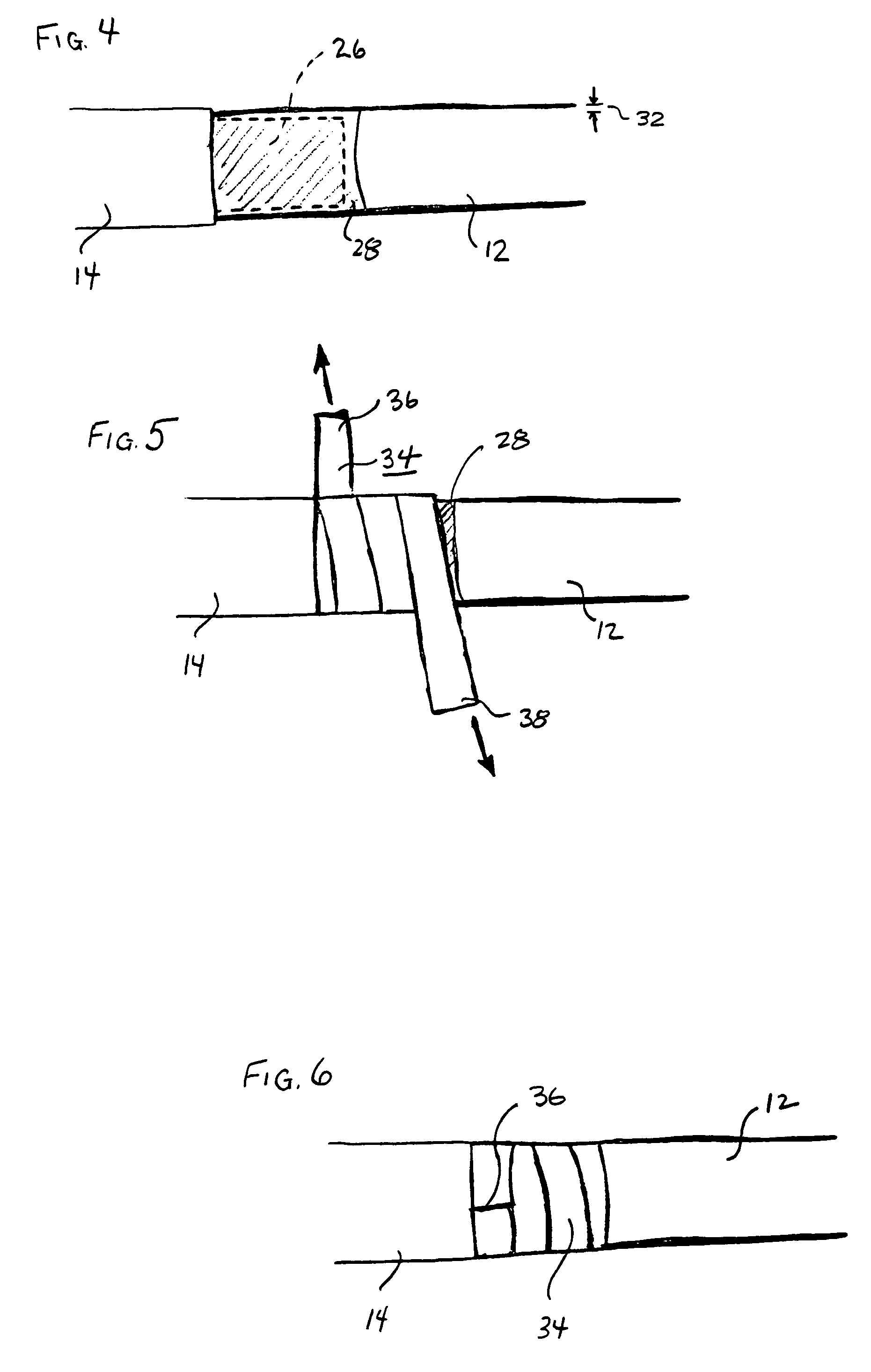Balloon catheter and method of mounting same
- Summary
- Abstract
- Description
- Claims
- Application Information
AI Technical Summary
Benefits of technology
Problems solved by technology
Method used
Image
Examples
example 1
A 7.62 mm wide length of porous expanded PTFE film is wrapped onto a 4.0 mm diameter metal mandrel at a pitch of about 2.54 mm per mandrel revolution so that about 3 overlapping layers cover the mandrel. Following this wrap, another 3 layers of the same film are applied over the first 3 overlapping layers, using the same pitch but in the opposite direction. This method of single-pass application is repeated a total of six times, so that finally, a total of 18 helical overlapping layers are applied onto the mandrel.
With the wrapping complete, the mandrel and overlying expanded PTFE film are placed in an air convection oven set at about 380° C. for about 18 minutes to heat-bond the adjacent layers of film, then removed and allowed to cool. The resulting 4.0 mm inner diameter film tube formed from the helically wrapped layers of film is then removed from the mandrel.
The film tube is then tensioned longitudinally, simultaneously reducing in diameter and lengthening until it reaches appr...
example 2
In an alternative embodiment, a portion of balloon material described in Example 1 is fitted coaxially onto a steel mandrel having an outer diameter of 0.71 mm. Isopropyl alcohol is used as a lubricant to ease the mounting of the balloon portion. The mandrel, with the overlying balloon portion, is then placed into an air convection oven set at 80° C. for approximately 5 minutes in order to evaporate the isopropyl alcohol. Upon removal from the oven, the outer diameters of each end of the balloon portion are 1.00 and 1.10 mm.
To reduce the outer diameters at the ends of the balloon material, a 3.5 mm section at each end of the balloon is treated within a heated contractible iris as described in Example 1, using the same settings with exception of the air input pressure, which is adjusted to 103 kPa. As in the case of Example 1, a length of silicone tubing having an inner diameter of 1.39 mm, and an outer diameter of 1.68 mm is fitted coaxially over the balloon material. Each end of th...
example 3
Still another example of attachment of a sleeve 60 of the present invention to a catheter shaft 62 is illustrated in FIG. 14. In this Example, the sleeve 60 is mounted to the catheter shaft 64 as an end-to-end butt joint 66, similar to that previously described with respect to FIGS. 1 through 4 except that no landing is employed. The butt-joint 66 is believed to be easier to construct and employ for some applications. The butt-joint 66 may be held together with a tape wrap, as previously described, or through use of a collar 68, formed from a shrink tube plastic or similar material. Again, the collar 68 is preferably formed from an essentially non-distensible material to further limit distention of the sleeve 60 end 70 when the balloon is inflated.
PUM
| Property | Measurement | Unit |
|---|---|---|
| Structure | aaaaa | aaaaa |
Abstract
Description
Claims
Application Information
 Login to View More
Login to View More - R&D
- Intellectual Property
- Life Sciences
- Materials
- Tech Scout
- Unparalleled Data Quality
- Higher Quality Content
- 60% Fewer Hallucinations
Browse by: Latest US Patents, China's latest patents, Technical Efficacy Thesaurus, Application Domain, Technology Topic, Popular Technical Reports.
© 2025 PatSnap. All rights reserved.Legal|Privacy policy|Modern Slavery Act Transparency Statement|Sitemap|About US| Contact US: help@patsnap.com



